Types of catfish corridor

Catfish corridors are incredibly popular with both experienced aquarists and newbies. Their small size, active behavior, and easy maintenance make them an excellent option for a home aquarium.
The only problem is the species, which number over 150. It will be quite difficult for an ignorant breeder to choose a pet among such a variety of options. Julie and nanus, duplikareus and brochis, Adolf's corridor and trilineatus - we will try to figure out which of them will become a real decoration of a home aquarium in this article.
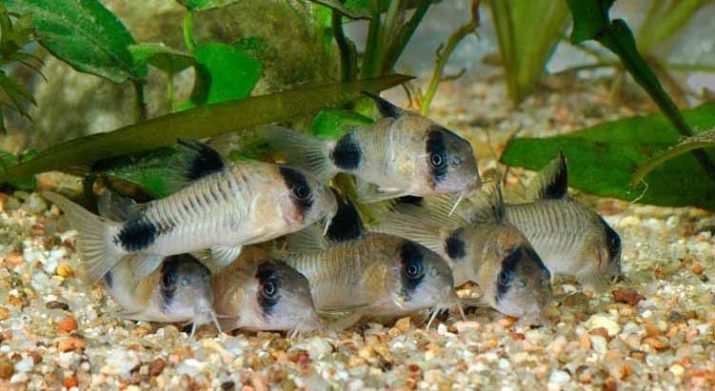
Description
Small armored catfish corridors are incredibly peaceful fish that prefer bottom layers of soil and play the role of orderlies in the tank. With such pets, when creating sufficient conditions for their maintenance, there are practically no problems. Among their subspecies there are relatively ordinary-looking, but very hardworking and active fish. However, there are also enough handsome men with a bright, eye-catching appearance here, you just need to study in more detail all the species available for aquarium maintenance.
Catfish corridors are small inhabitants of South American freshwater rivers, which have long turned into aquarium inhabitants. These fish grow up to 10 cm in home conditions. The compact catfish has a short body with a convex back and keratinized bone plates on the surface of the body and head. They replace scales and give catfish another name - armored. In addition, this variety is often referred to for short as measles catfish.
In addition to the protective shell of bone plates, these small fish have other means to ensure their own safety.Their pectoral fins are radial and hard and sharp. When transplanting with a net, you need to be careful - the mesh may break.
The color of the corridor catfish can be either solid or spotted or striped. There are albino forms that are artificially devoid of pigment. But most often in the aquarium, there are decorative versions with an unusual, spectacular body color.
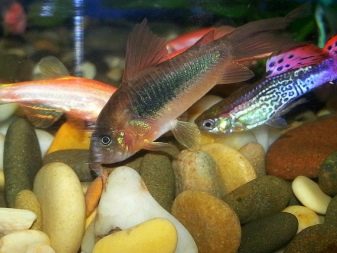

The mouth apparatus of the fish is located at the bottom of the head, this allows the catfish to efficiently collect food from the bottom of the aquarium. On the lips above and below there are characteristic tendrils that allow you to “see” the world around you even with high turbidity of water. The respiratory system of fish is also unusual. Catfish corridors can breathe with gills underwater or swallow air bubbles by mouth on the surface.
Females are paler in color, with a rounded fin on their back. Males are brighter and their identification at puberty is easy enough. Catfish measles are real centenarians. To the delight of the owner, they are able to be active and feel great up to 15 years.
Peaceful nature allows the fish to easily get along with members of their family and other inhabitants of freshwater aquariums.
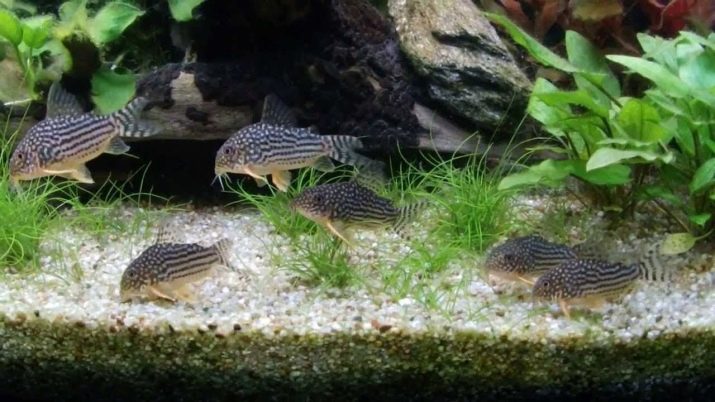
Views
Among the variety of species of catfish of the corridor, you can find rather unusual names. For example, the smallest fish, reaching no more than 3 cm in length, are called "pygmies". A catfish with a depigmented body is called an albino. Almost all varieties in the aquarium look more decorative in flocks of 5-6 individuals. Their individual characteristics are worth considering in more detail.
Julie
The colorful fish with a cream or pale gray body shade has an interesting pattern of black specks all over the head and body. Symmetrically located ornament emphasizes the originality and expressiveness of the external appearance. Julie's corridor in the aquarium grows up to 5 cm.
A characteristic feature of the species is the presence of a black spot on the edge of the transparent dorsal fin.
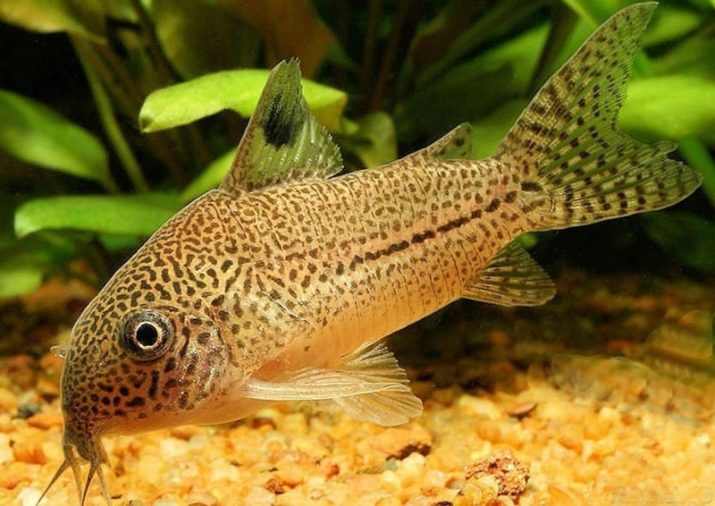
Nanus
Corridoras nanus has body length not exceeding 5 cm in males, females are even smaller... This species is distinguished by a silvery color of the body, an olive shade is expressed on the forehead and back, on top of which there is a clear mesh pattern of black. On the sides there are 3 clear light stripes, males are colored brighter than females, they have a pronounced golden hue in the lower part of the caudal and pelvic fins.
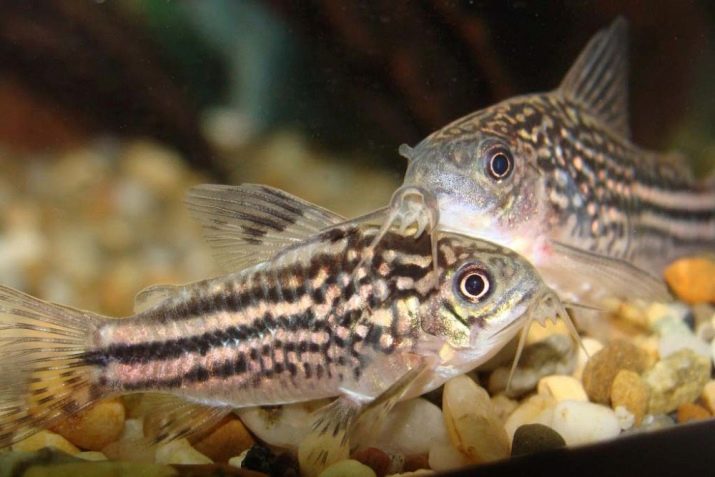
Speckled or Paleatus
This type of catfish gave rise to the albino species. The speckled corridors have a convex back, a body length of up to 6-7 cm, a gray-olive basic color and a yellow-pink abdomen. On the surface of the head, body, fins, there are asymmetrical dark spots of irregular shape. On the side there is a characteristic stripe formed from transversely located lines.
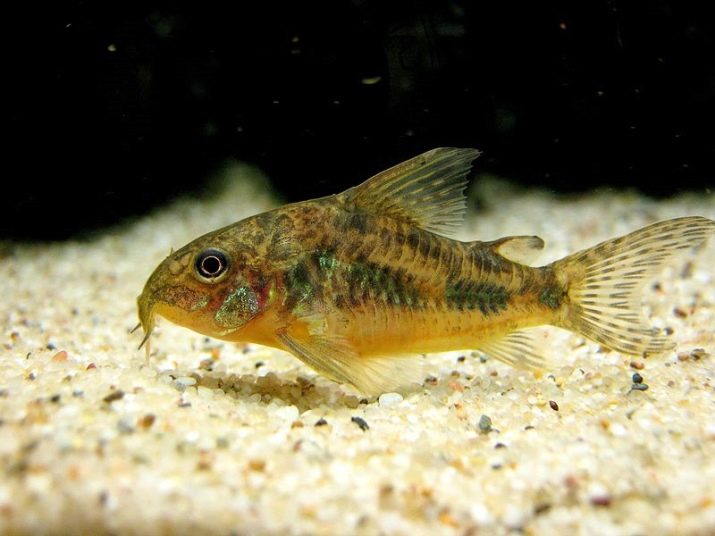
Golden (Gold)
Catfish corridors with a bright golden color are also sometimes referred to as bronze or aeneus. This species is characterized by color variability - lemon to almost orange. The coloration of the body in the back area is especially rich. The catfish is very decorative, popular among amateur aquarists, it grows up to 7 cm in length.
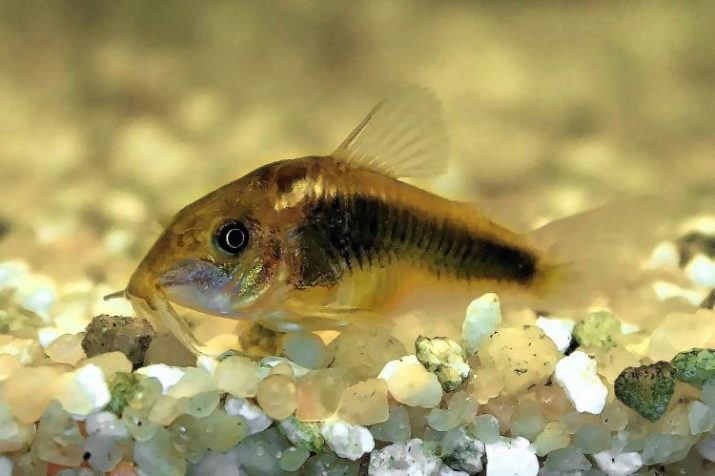
Panda
An unusual fish with a body color reminiscent of the famous bear. The corridor grows from a panda up to 5 cm in length. Its body is pale pink or silvery yellow in color with pronounced dark markings: on the eyes (in the form of a mask), on the back and at the base of the caudal fin. The unusual appearance makes these fish popular among hobbyists.
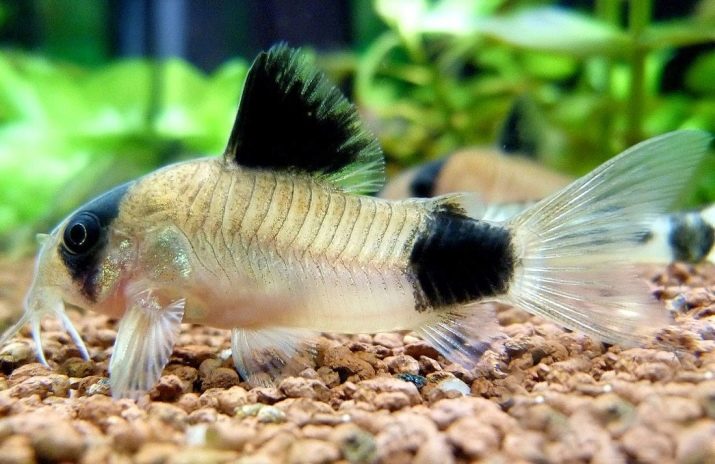
Duplikareus
This view bears great resemblance to the Adolf corridor. The fish have a body length of up to 4-5 cm, a golden-orange background color, a darker back, a strip in the gill region. These markings are fairly wide, and the pigmentation as a whole looks bright enough.
The only obvious difference between a fish and a similar species is the smallest notches running along the pectoral fins. True, it is quite difficult to see them with the naked eye.
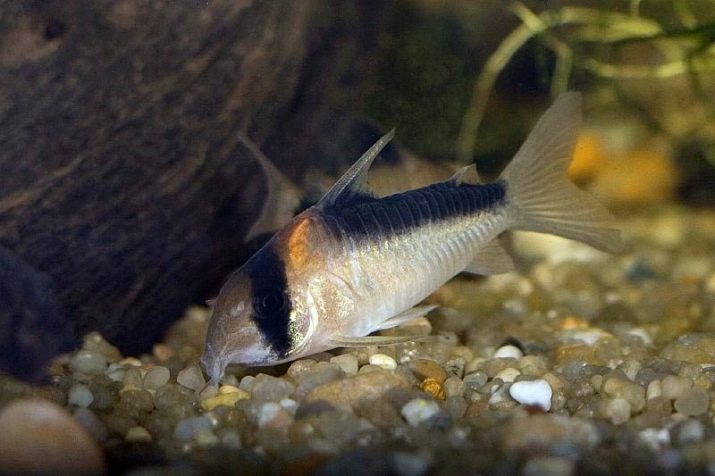
Brochis
Catfish corridor brochis are large representatives of their species. They grow up to 9 cm in length. But not large dimensions are the main advantage of this fish - The brochis corridor is very brightly colored, has an unusual emerald-green hue of the shell with a bright neon tint.
Such an aquarium dweller will definitely be quite difficult not to notice. This type of catfish differs from its other counterparts in the presence of a ten-rayed dorsal fin, a sharper muzzle, and a thickened body.
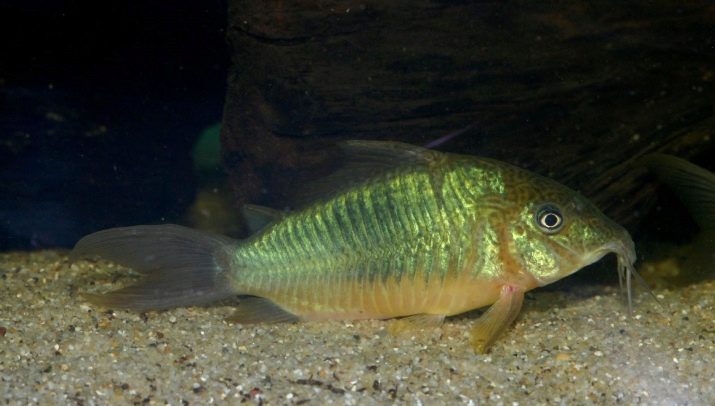
Albino
The description of albinos looks pretty impressive. In fact, Corydoras paleatus is an artificial pseudo albino. The fish has a body and head of a pink-white hue, eyes are bright red. Despite the original appearance, such a pet is well suited for keeping in small and medium-sized aquariums, it is not sensitive to water parameters. The maximum body length of an albino variety of corridor catfish does not exceed 7 cm.

Trilineatus
According to its external data, the trilineatus corridor is very similar to the Julie subtype, it has a body length of 5-6 cm, a beige body with contrasting black spots on the surface. The background of its body is lighter, rather sandy. On the sides, an ornament of parallel horizontal stripes can be traced, and in females it reaches only half of the body.
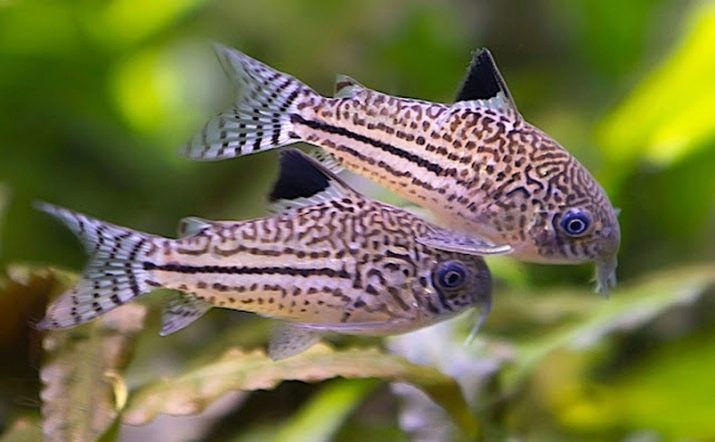
Habrozus
The dwarf catfish corridor habrozus is one of the three smallest species of this fish, along with the pygmy and the sparrow. Adults have a body length of up to 2 cm, they are distinguished by lively, active behavior. The main color of the body is light beige with a yellow tint or silver, on top it is covered with dark spotted markings. The areas of the tail and fins are brightly colored; a wide black stripe runs along the body.
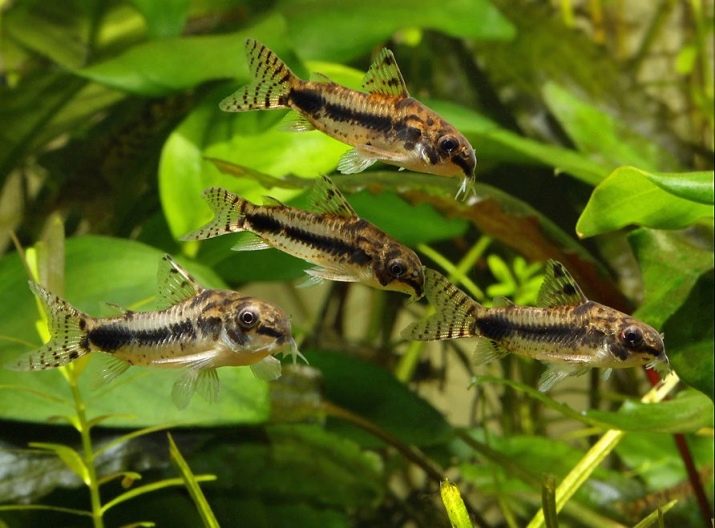
How to choose?
There are certain selection rules that allow you to purchase a healthy and active fish for your aquarium. In the case of catfish, regardless of their type, you need to pay attention to the following points.
- The condition of the belly of the fish. An overly sunken belly indicates poor nutrition or the presence of worms. A bulging, swollen belly can be a sign of many diseases - it is hardly worth taking a obviously unhealthy pet.
- The presence of mucus or inflammation on the gills. Darkening of the respiratory system is also an alarming symptom - they change color due to nitrogen poisoning.
- Eye condition. Turbidity, the formation of a film is an alarming sign, such a fish can die pretty soon. Bulging or severely sunken eyes can also be a symptom of the disease.
- Behavior. By nature, the corridors are quite active, playful fish. If they lie motionless at the bottom, are apathetic, swim slowly and sluggishly, do not react to people nearby, you should refuse to purchase pets.
- The condition of the fins. There should be no traces of rot, adhesion, red stripes on them.
- The integrity of the antennae. They must not have any signs of scrapping. It is important for catfish to keep these elements intact.
- The presence of atypical formations on the body. If reddish spots are visible in the abdomen, this could indicate a bacterial infection. On the sides and back, growths, discoloration can be the result of parasitic infection or fungus.
- Features of movement. Healthy fish should not experience problems with tacking, changing the trajectory of its movement. The manifestation of imbalance, moving sideways, abrupt jerks indicate that it is clearly not worth buying fish.
- Breathing features... Healthy fish easily swallows air, breathes easily, actively moves to the bottom after rising. A sick catfish corridor will float with difficulty and it will be difficult to sink to the bottom.
- The presence of dead fish in the aquarium. This is completely unacceptable when it comes to a store, it is worth looking for another point to purchase pets.
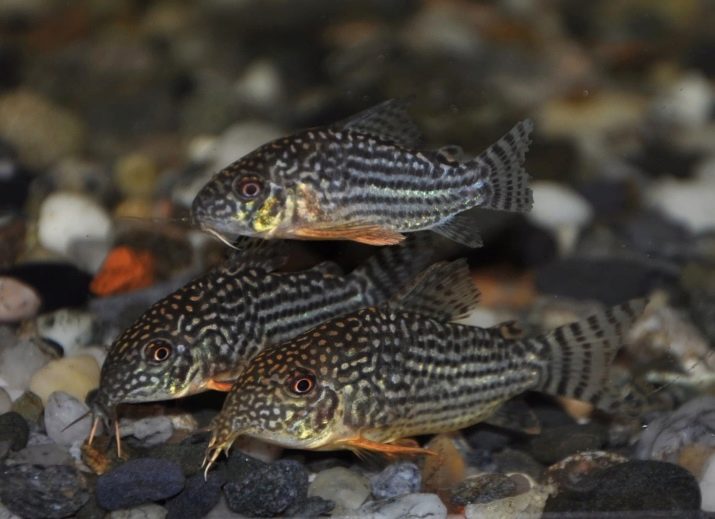
When choosing catfish for an aquarium it is worth giving preference to individuals of different sizes. In this case, the probability of getting both males and females in the same batch will be much higher.
Before planting new pets in a common aquarium, you must first quarantine. This will eliminate the risk of contamination of other fish, and the corridors will more easily adapt to a new place of residence.
For more information on the features of these fish, see the next video.








